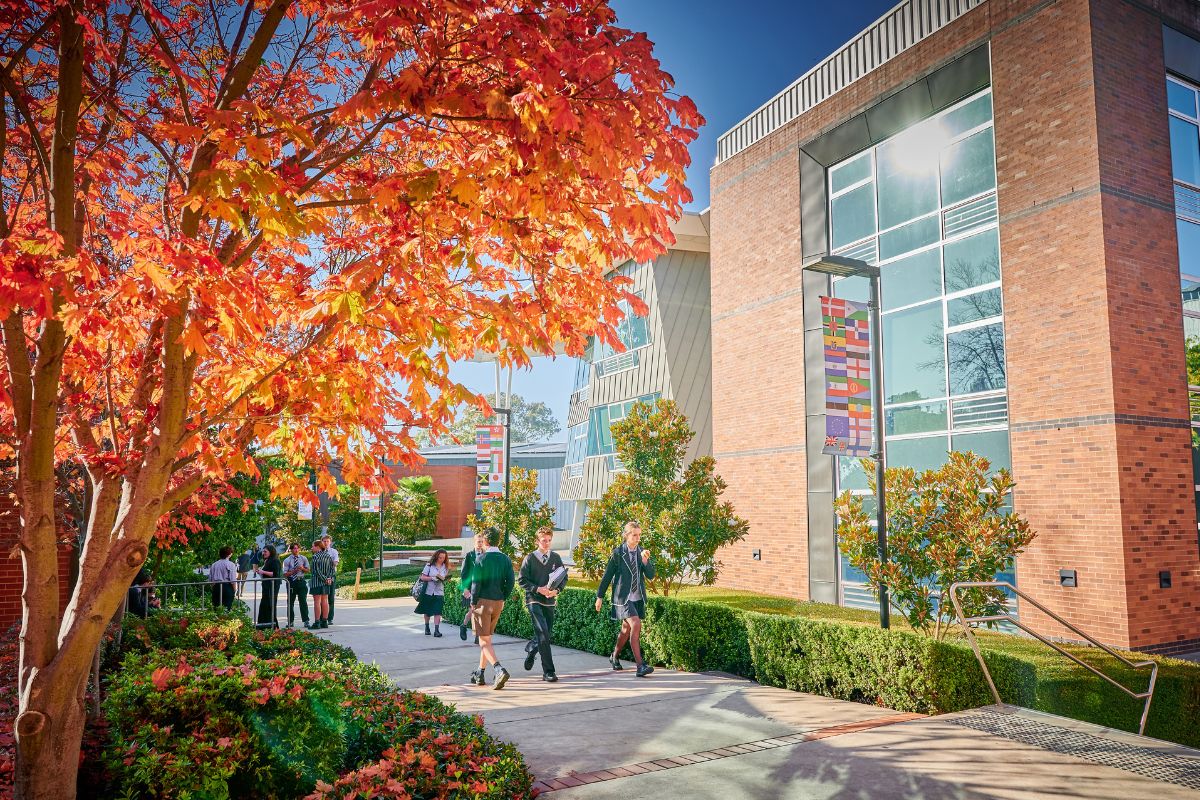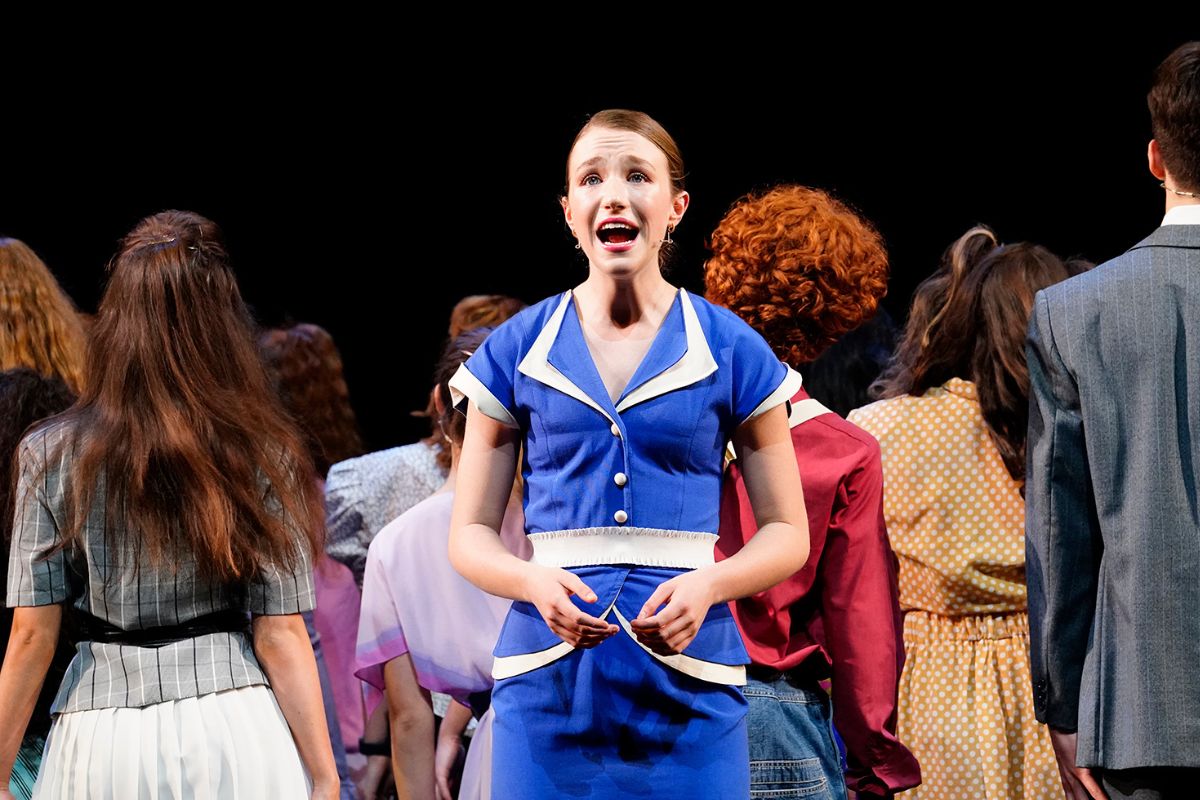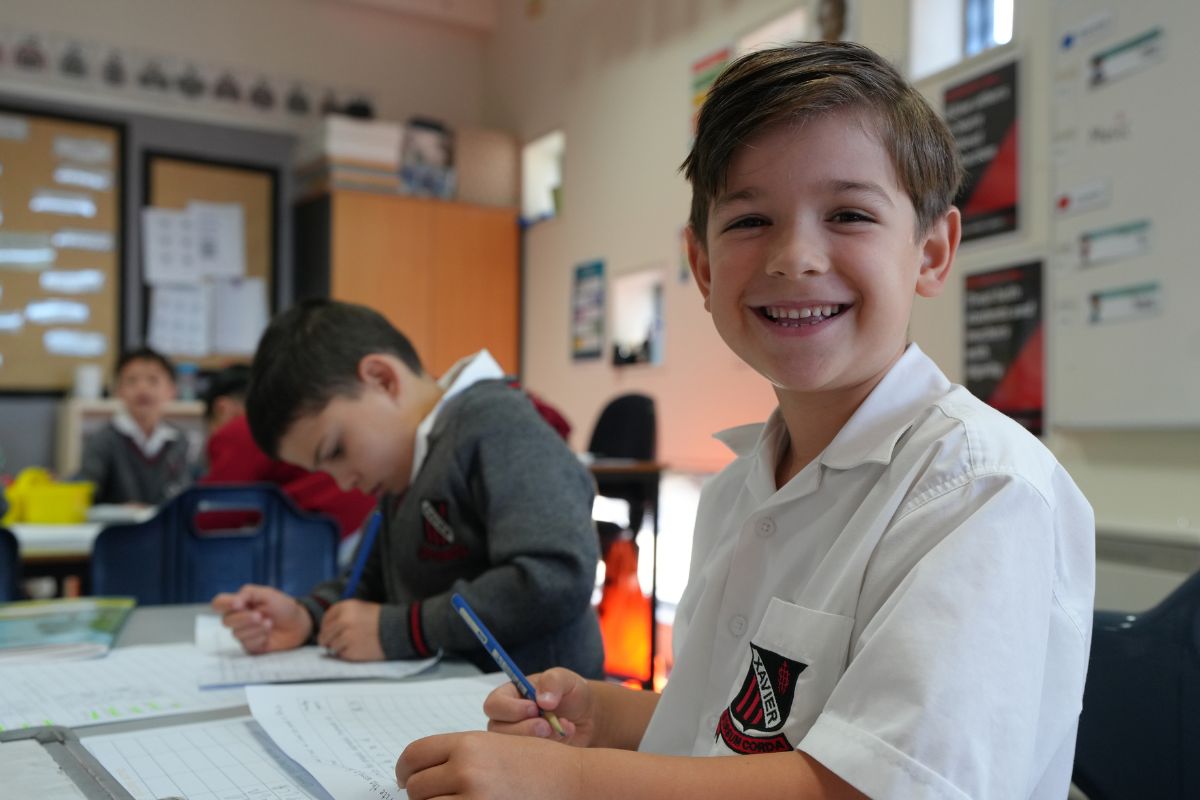Education 2014/2015 – Secondary schooling and student welfare
Secondary schooling commences at Year 7 level and is compulsory for all NSW students aged younger than 17.
In Years 7 and 9, students sit the NAPLAN test, which is designed to assess students’ literacy and numeracy skills. In Year 8, all students in NSW government schools sit for the Essential Secondary Science Assessment (ESSA), which is designed to test students’ knowledge, skills and attitudes towards science.
It is optional but not compulsory for non-government schools to register for the ESSA test. From the end of Year 10, students who have fulfilled their course requirements are eligible for the NSW RoSA, issued by the Board of Studies, Teaching and Educational Standards NSW.
The RoSA is cumulative, meaning it records achievements and participation in senior secondary study up to the point that a student leaves school, and records A to E grades based on schoolbased assessment.
Students leaving school also have the option of taking online literacy and numeracy tests. Higher School Certificate Most students choose to continue their studies to attain the Higher School Certificate (HSC).
On successful completion of all course requirements, including assessments and exams, students participating in the HSC will receive a result for each HSC course.
This information is used by the Universities Admissions Centre to derive the Australian Tertiary Admission Rank (ATAR), which is used to determine entry into university courses.
This is the common name given to all existing selection indices in Australian states and territories (excluding Queensland). The highest ATAR attainable is 99.95.
This score would indicate the student is in the top 0.05 percentile of students in Australia.
As well as the ATAR, students who participate in the HSC receive an HSC Course Report for each general education course they complete.
This report describes their level of achievement as well as the standards reached by other students in the course.
A “minimum standard expected” has been set for each course, which corresponds to a mark of 50 out of 100.
Students who reach or exceed the minimum standard for each course will score between 50 and 100. Each HSC Course Report for a general education course shows a student’s mark in relation to six performance bands, the highest of which is band 6 (between 90 and 100). These bands clearly describe what students know and can do at each level of achievement. Student results in the HSC are based equally on both state-wide examinations and school-based assessment.
School assessments are adjusted to ensure results from all schools across the state can be fairly compared.
Schools are not allowed to reveal to students the final school assessment submitted to the Board of Studies, Teaching and Educational Standards NSW because of this adjustment process, but they do inform students of their ranking within each course after the examinations have finished. In addition to a wide range of general education courses, HSC students are also able to select from vocational education and training (VET) courses.
These can be part of the students’ HSC curriculum and enable students to gain both HSC qualifications and Australian Qualifications Framework (AQF) accreditation. Diversity and choice Students have greater options in their choice of high school than ever before. There is a wide diversity of high schools within NSW: technology high schools; selective high schools and comprehensive high schools with selective streams; language high schools; single-gender high schools; agricultural high schools; sports high schools; performing arts high schools; creative arts high schools; multi-campus colleges; and senior high schools.
These are all in addition to comprehensive high schools, which remain the backbone of the secondary schooling system. All students are guaranteed a place in their local government high school, however entry into non-local schools is subject to available accommodation.
This should be kept in mind if you want to apply to a school outside your designated local area. Teachers There are over 2200 government schools in NSW which employ more than 80,000 teachers, all of whom are highly trained and skilled.
Most teachers in government and non-government schools have completed three or more years of training at a highereducation institution.
Many teachers have also completed further studies and hold post-graduate qualifications.
Additionally, teachers regularly attend professional learning programs developed by the Department of Education and Communities and other organisations. The implementation of the Teacher Accreditation Act (2004) ensures that all teachers who commenced teaching on October 1, 2004, must achieve accreditation with the Board of Studies, Teaching and Educational Standards NSW. This requires them to demonstrate effective practice as described in the Australian Professional Standards for Teachers.
These standards are also applied to mandatory participation by teachers in continuing professional development. The Education Act 1990 The Education Act of 1990 established the framework for school education in NSW. Under the act, students from Kindergarten to Year 10 are required to study a range of subjects organised in what are termed “Key Learning Areas” (KLAs).
There are six Key Learning Areas for Kindergarten to Year 6: English Mathematics Science and Technology Human Society and Its Environment Creative Arts Personal Development, Health and Physical Education There are eight Key Learning Areas for Years 7 to 10: English Mathematics Science Human Society and Its Environment (HSIE) Personal Development, Health and Physical Education (PDHPE) Creative and Performing Arts (CAPA) Technology and Applied Studies (TAS) Languages Each subject has a detailed syllabus document developed by the NSW Board of Studies, Teaching and Educational Standards NSW that outlines the course of study and the learning outcomes to be achieved. Eligibility for awards Students will need to have completed the mandatory requirements for Stage 5 (Year 10) to be eligible for a RoSA.
Those eligible students who choose to leave school prior to receiving their HSC may receive a RoSA. Students will be required to submit assessment tasks as delivered by their schools, which will then use marks from those assessments to allocate a grade for each student.
Teachers will submit those grades to the Board of Studies, Teaching and Educational Standards NSW for inclusion on the RoSA if required.
Students may also undertake optional numeracy and literacy exams online. There are two stages of the Higher School Certificate that candidates must complete, referred to as “patterns of study”.
The Preliminary pattern of study comprises a minimum of 12 units (each subject is worth a certain number of units) and the HSC pattern of study comprises at least 10 units. Both patterns must include a minimum of six units of Board-developed courses and at least two units of a Board-developed course in English.
At least three courses must be of two-unit value or greater (either Board-developed or Board-endorsed). Both patterns of study must include at least four subjects.
To satisfy pattern of study requirements for the HSC, a student may count a maximum of six Preliminary units and six HSC units from courses in science. Apart from Board-developed courses, students can also study courses developed by their school.
These school-developed courses are known as Board-endorsed courses and can be included among the courses that count towards the HSC. Additionally, the Board has made some exemplary Board-endorsed courses available to all schools.
These are known as content-endorsed courses. HSC students can also combine study of traditional “academic” subjects with courses that provide vocational training.
A number of TAFE courses are recognised for the HSC and students who successfully complete these courses will receive credentials from TAFE as well as a listing of the courses on their Higher School Certificate Record of Achievement.
There are also eight dualaccredited vocational courses developed by the Board that are recognised by industry and also count towards the award of the HSC. Courses for the HSC can be accumulated over up to five calendar years from the year in which a course examination is first attempted.
Students who wish to balance study with work, family commitments or other interests can use this option to design a study program and complete the HSC in a way that suits their needs. School councils Under the 1990 Education Act legislation, school councils were developed as an option for school communities seeking to increase relevant community participation in the policy-making of local schools. School councils provide a focus for school community activity.
They comprise parents, staff and community members.
Where established, these councils set policies and goals for their schools including directions for the future based on the needs of the local community.
The councils combine the efforts of parents, staff and the community in a genuine partnership to promote quality school-based decisions.
Student Welfare
Schools are interested in more than academic instruction; there’s also concern for the welfare of their students and their overall development. Good discipline Student discipline in government schools is one section of the Department of Education and Communities’ student welfare policy.
The emphasis of this policy is on good discipline — the development and care of the whole student as opposed to modifying behaviour under the threat of punishment.
Such positive school programs do not replace or undermine firm discipline policies but aim to deal with the causes of any problems. The Student Discipline in Government Schools policy states that all government schools must have an individual school discipline policy.
This policy is to be developed in consultation with school community members.
It has four areas of focus: School rules or discipline code Strategies to promote positive student behaviour Ways to recognise and reward student achievement Strategies for dealing with unacceptable behaviour All parents and students have access to a copy of the school’s discipline policy, including the school’s homework policy and dress code, if desired.
This is regularly updated by the school. School non-attendance Every student who is enrolled at a school, regardless of their age, is required to attend on every school day.
It is the parents’ legal responsibility to ensure regular attendance.
Rolls are marked every day.
Students who have been sick or absent need to provide a note from their parents within seven days.
Schools will inform parents of any cases of truancy or unexplained absences. In l986, the government initiated the Home School Liaison Program (HSLP) to consult with teachers and principals at schools and provide support to parents. The program’s officers form an essential link between the home and the school, as they are specifically trained to work with families, staff and students to improve student attendance.
Home School Liaison officers can be contacted through the school principal or your closest regional office. Student leadership and student representative councils The school community is an excellent training ground for the development of student leadership skills.
Student leadership programs assist in developing skills in young people, with one of the best-known initiatives being the student representative council (SRC).
All secondary schools have an SRC and primary schools are also beginning to establish them. It consists of student leaders from each year who have been elected by their fellow students.
They have the task of representing the interests of their peers to the school, staff and parent and community groups.
SRC members participate in school planning and decision making and initiate projects within the school as well as organise ways for other students to participate in school life. Some high schools have a prefect body as well as an SRC.
In most cases, these high-profile student leaders within a school have come through the ranks of the school’s SRC structure. The secondary school student leadership network extends to inter-school and regional SRCs and a state body known as the New South Wales Student Representative Council (NSW SRC).
This forum of 22 student leaders, including two Aboriginal students, is also peer-elected.
It is consulted by senior officers in the Department of Education and Communities, other government departments and business and community groups. The other state body of peer-elected student leaders is the State SRC Conference Working Party.
This group plans and conducts an annual State SRC Conference with regional SRC participants from across NSW.
The annual conference deals with student welfare themes of interest to young people.
As a result of the conference, information and actionplanning flow to the NSW SRC, regional, interschool and school SRC forums. Such conferences reflect the fact that SRCs are increasingly involved in student welfare programs such as peer mediation and conflict resolution, drug education, health and safety, student leaders on teacher committees, Aboriginal student leadership, anti-discrimination and anti-racism. These activities provide opportunities for the development of student leadership skills that will not only assist school organisation and planning, but will also be beneficial for the students in many areas of their life in the future.


